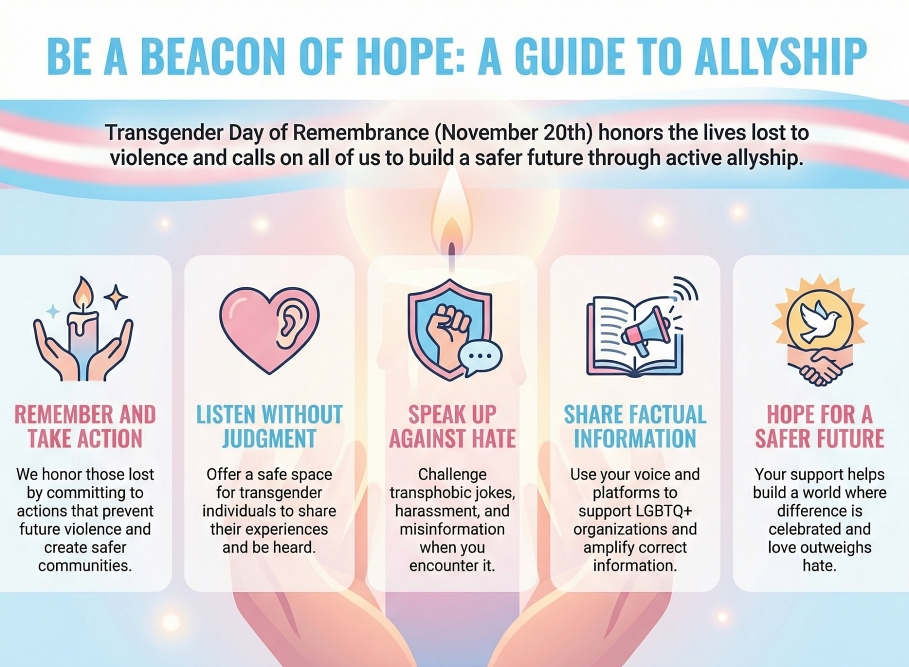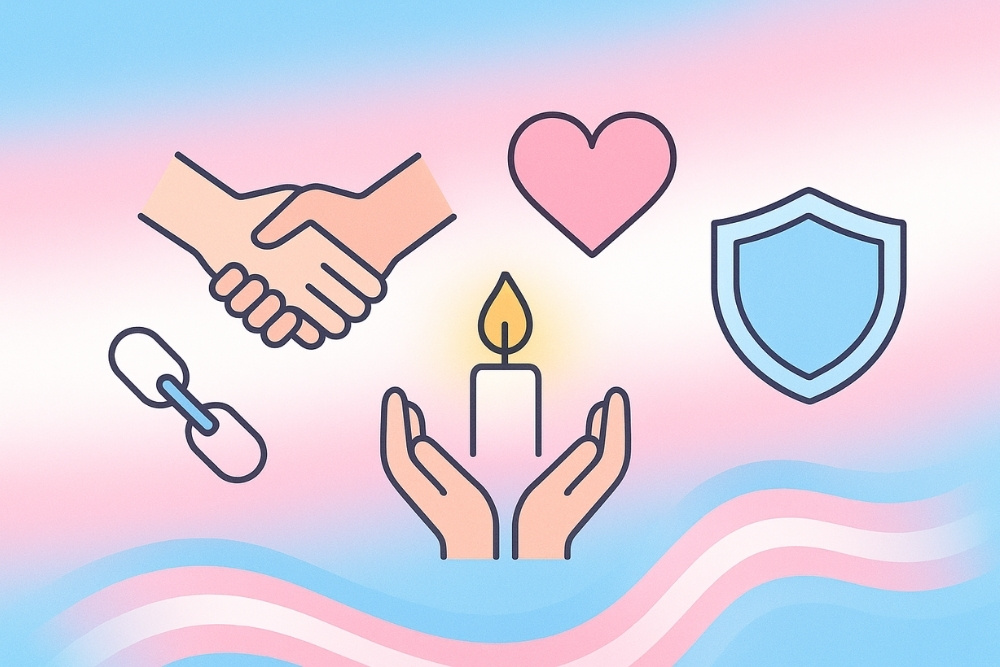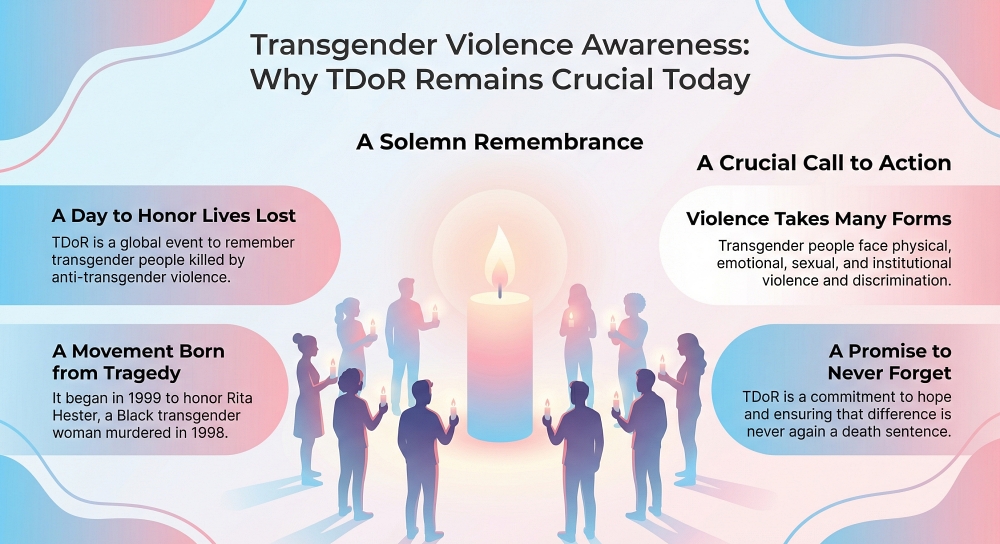Transgender Day of Remembrance is far more than a date on the calendar. It is a moment that urges us to pause, to listen, and to look back at the lives of transgender people lost to hate, misunderstanding, and violence. It is a day when Transgender Violence Awareness becomes deeply personal—a reminder that diversity should never have to be paid for with someone’s life. This article aims to help you understand the meaning of TDoR in a way that feels conversational and human, as if shared with a friend, while still providing a clear picture of the systemic issues behind the violence transgender communities face.
Why Do We Still Need to Talk About Transgender Violence Awareness?
Every year, countless transgender individuals lose their lives to hate crimes—violence driven by prejudice, fear, and dehumanization. The forms of harm vary: physical assault, harassment, public humiliation, emotional abuse, discrimination, even violence within families or communities that see their identity as “wrong.”
What breaks the heart even more is that many perpetrators are never held accountable. In several parts of the world, simply being transgender is criminalized, increasing vulnerability and blocking access to justice.

This is why Transgender Day of Remembrance isn’t just a memorial event. It is society’s collective cry:
“Enough—no one should lose their life simply for being themselves.”

The Origins of TDoR: A Movement Born From Tragedy
Transgender Day of Remembrance, now a global symbol of Transgender Violence Awareness, was not created as a symbolic observance. It emerged from deep grief—grief that shook an entire community.
The roots of TDoR trace back to 1998, when Rita Hester, a Black transgender woman in Boston, was brutally murdered in her own apartment. Her death not only shattered the transgender community but also exposed how violence against transgender individuals was routinely ignored by both society and state institutions.
To make matters worse, media reports repeatedly misgendered her, diminishing her dignity even in death.

Her murder raised urgent questions for the LGBTQ+ community, especially transgender women of color:
- Why is violence against transgender people so often dismissed or uninvestigated?
- Why are hate crimes against transgender individuals rarely taken seriously?
- Why does society continue to overlook their humanity?
In response, activists and human rights groups organized the first Transgender Day of Remembrance in 1999. The event included symbolic acts such as:
- Candlelight vigils to honor the lives lost
- Reading the names of transgender individuals murdered that year
- Sharing personal stories, reminding the world that these were real people—not statistics
- Peaceful gatherings promoting solidarity and resistance against hate
What began as a small local memorial soon grew into a global movement. Today, on November 20, hundreds of cities across the Americas, Europe, Asia, and beyond hold vigils to reaffirm that those who were taken will not be forgotten.
More importantly, TDoR deepens Transgender Violence Awareness by exposing structural issues behind the violence—such as systemic discrimination, gender-based hatred, institutional neglect, and barriers to justice that transgender people face worldwide. TDoR is not only a day of remembrance. It is a demand for action to prevent these tragedies from happening again.
What Forms of Violence Do Transgender People Experience?
Many assume “violence” means only physical harm. But for transgender people, violence appears in many forms—some visible, many hidden.
Most Common Forms of Transgender Violence:
- Physical violence — assaults, attacks, and hate crimes
- Sexual violence — transgender women are disproportionately targeted
- Emotional violence — humiliation, ridicule, and denial of identity
- Institutional discrimination — unequal treatment in schools, workplaces, hospitals
- Family violence — often overlooked but widespread
The deepest scars are often not physical wounds, but the painful message that “you do not deserve safety.”

How TDoR Connects to Ending Violence Against Women
Organizations like the UN and UNESCO emphasize that ending violence against women must include transgender women. They face some of the highest rates of gender-based violence worldwide—from sexual assault to legal exclusion to being denied medical care. As more countries begin acknowledging transgender rights within the broader gender equality framework, TDoR becomes a vital tool for strengthening Transgender Violence Awareness and pushing societies toward safer, more inclusive futures.
A Friend’s Perspective: Why Transgender Violence Awareness Matters to All of Us
Some may think, “I’m not transgender, so this has nothing to do with me.” But violence against one group affects everyone—it shapes the values and safety of society as a whole.
Consider:
- If hate can justify taking one person’s life, it can justify harming others.
- If diversity is treated as a threat, all differences become unsafe.
- If someone can be killed simply for being themselves, none of us are truly free.
Talking about TDoR and Transgender Violence Awareness isn’t just about gender identity. It’s about humanity.
Real Cases Highlighting Transgender Violence Awareness
Examples highlighted by human rights groups show the ongoing nature of this violence:
- Transgender women killed for not conforming to assigned gender roles
- Transgender youth attacked in schools without protection
- Trans people dying from sexual violence or abusive family environments
- Cases dismissed by authorities due to prejudice or negligence
These are not stories from the distant past. They happen every year.
The World Is Changing—But Is It Enough?
Yes, progress is visible. More countries are:
- Recognizing transgender rights
- Protecting workplace equality
- Allowing legal name and gender marker changes
- Addressing hate crimes more seriously
But fear, stigma, and hatred continue to cost lives. That is why TDoR remains essential for sustaining global Transgender Violence Awareness. Silence allows harm to grow. Awareness pushes society to confront injustice.
Related Article
- Equal Health Access – Hormone Therapy Under Gold Card
- Conversion Therapy Explained: The APA’s Perspective
What Can We Do as Everyday Allies?
You don’t need to be an activist or have a platform. Small actions make a meaningful difference.
Practical Ways to Support Transgender Violence Awareness
- Listen without judgment
- Speak up when witnessing discrimination or harassment
- Share factual information about TDoR and transgender safety
- Support LGBTQ+ organizations working on equality and protection
- Avoid transphobic jokes or language that reinforces stigma
Sometimes, kindness is the only warmth someone receives on a difficult day.

TDoR: A Promise to Never Forget
On Transgender Day of Remembrance, we light candles for those we have lost—but the candle is not only a symbol of grief.
It is a symbol of hope:
- Hope for safer communities
- Hope for respect for all identities
- Hope that difference will never again be a death sentence
- Hope that love will always outweigh hate
By remembering those who were taken, we are making a promise:
“We will not allow hate to take another life.”
References:
- วันรำลึกถึงผู้เสียชีวิตในกลุ่มคนข้ามเพศ (TDOR)
- สัปดาห์รณรงค์ตระหนักรู้ถึงคนข้ามเพศและวันรำลึกถึงคนข้ามเพศ
- เสวนา จากสมรสเท่าเทียม สู่การยอมรับตัวตน และ TDOR 2025

